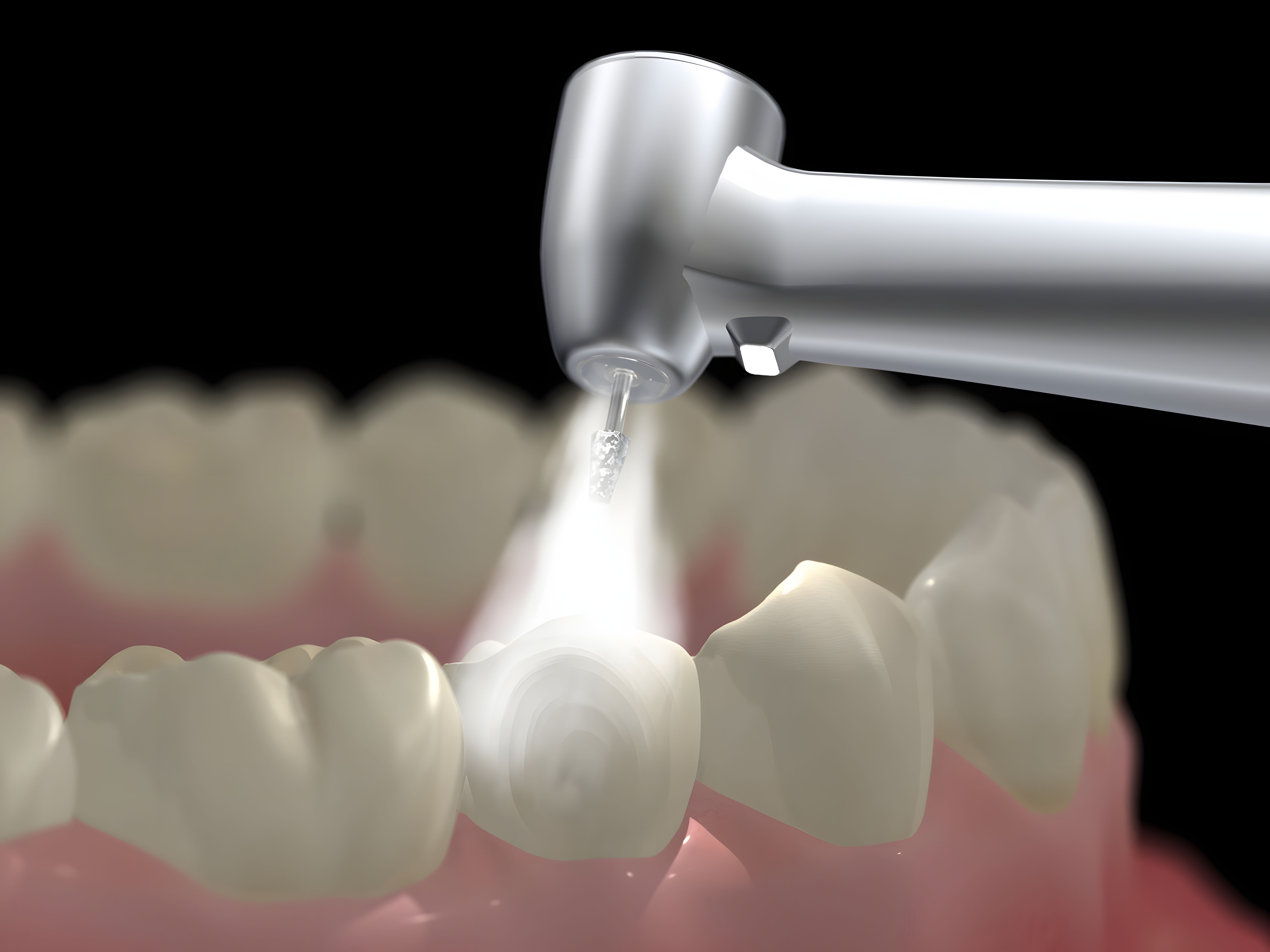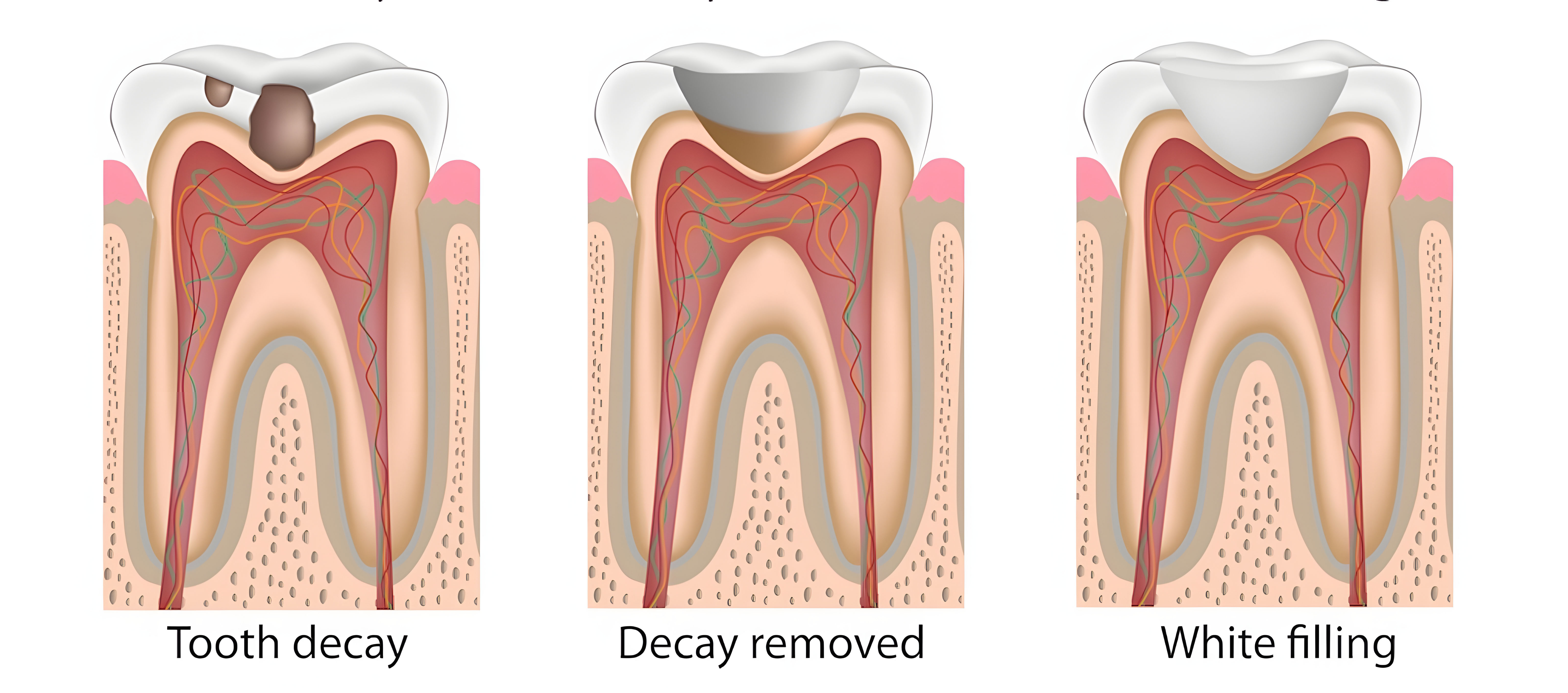COMPOSITE FILLING

A Comprehensive Guide To Composite Fillings

WHAT ARE COMPOSITE FILLINGS?
Composite fillings are a type of dental filling material made from a mixture of plastic and glass. They are used to repair teeth that have been damaged by decay, cracks, or fractures. Composite fillings are tooth-coloured, so they blend in with the natural colour of your teeth, making them a more aesthetic choice than silver amalgam fillings.

ADVANTAGES OF COMPOSITE FILLINGS
Composite fillings have several advantages over traditional silver amalgam fillings. First and foremost, they are more aesthetically pleasing since they can be matched to the colour of your natural teeth. Additionally, they require less removal of healthy tooth structure to place, so more of your natural tooth can be preserved. Composite fillings are also less sensitive to temperature changes, which can be a problem with silver amalgam fillings.
TYPES OF COMPOSITE FILLINGS
There are two types of composite fillings:
-
DIRECT
Direct composite fillings are applied in a single visit to your dentist and cured on the spot using a special light.
-
INDIRECT
Indirect composite fillings are fabricated in a dental laboratory and then bonded to your tooth during a follow-up appointment. They are often used for larger fillings or to repair significant cosmetic imperfections.
PROCEDURE FOR COMPOSITE FILLINGS
The procedure for placing composite fillings is similar to that of traditional silver amalgam fillings. First, your dentist will remove the decayed or damaged part of the tooth. Then, they will apply an adhesive to the tooth and place the composite filling material in layers. Each layer is cured with a special light before the next layer is applied. Finally, the filling is shaped and polished to match the natural contours of your tooth.
AFTERCARE FOR COMPOSITE FILLINGS
After getting a composite filling, you may experience some sensitivity to hot or cold temperatures for a few days. Your dentist may recommend using a desensitizing toothpaste or mouthwash to help alleviate this sensitivity. It is also important to maintain good oral hygiene by brushing and flossing regularly to prevent future decay.
CONCLUSION
In conclusion, composite fillings are an excellent alternative to traditional silver amalgam fillings. They offer many advantages, including improved aesthetics and preservation of healthy tooth structure. While they do have some disadvantages, the benefits they provide make them a popular choice for dental restorations. If you are considering getting a composite filling, be sure to talk to your dentist to see if it is the right option for you.
Frequently Asked Questions (FAQs)
What are Composite Fillings?
Composite fillings are a mixture of glass or quartz filler, resin, and a curing light that creates a tooth-coloured material for repairing cavities, chips, and cracks in teeth.
What are the benefits of Composite Fillings?
The benefits of composite fillings include: they are aesthetically pleasing, durable, safe, and versatile.
Are there different types of Composite Fillings?
Yes, there are two types of composite fillings: Direct and Indirect.
How is the procedure for Composite Fillings performed?
The procedure for composite fillings includes preparation, bonding, and polishing. The dentist numbs the affected area, prepares the tooth, applies the composite material in layers and cures it using a special light, and finally shapes and polishes the filling to match the tooth's contours.
Are Composite Fillings safe?
Yes, composite fillings are safe as they do not contain any mercury, making them a non-toxic option for dental restoration.
How do composite fillings compare to traditional silver amalgam fillings?
Composite fillings are more aesthetically pleasing and blend in with the natural colour of the tooth, while traditional silver amalgam fillings are noticeable silver-coloured spots in the mouth. Additionally, composite fillings are safe and do not contain any mercury, while traditional silver amalgam fillings contain mercury.
Is the procedure for composite fillings painful?
The procedure for composite fillings is generally not painful as the dentist will numb the affected area with a local anaesthetic.
How long does the procedure for composite fillings take?
The length of the procedure for composite fillings depends on the size and location of the filling, but typically it takes between 30 minutes to an hour.
How long do composite fillings last?
Composite fillings typically last between 5 to 7 years with proper oral hygiene and regular dental check-ups.
Can composite fillings be used for cavities in the front teeth?
Yes, composite fillings can be used for cavities in both front and back teeth.
Can composite fillings be used for more than just cavities?
Yes, composite fillings can be used to repair not just cavities, but also chips, cracks, and other cosmetic imperfections in your teeth.
Are composite fillings as durable as traditional silver amalgam fillings?
Yes, composite fillings are made to withstand the daily wear and tear of biting, chewing, and speaking.
Can composite fillings be used for children?
Yes, composite fillings can be used for children, but it is important to consult with a pediatric dentist to determine the best option.
Can composite fillings be used for people with metal allergies?
Yes, composite fillings are a safe option for people with metal allergies as they do not contain any metal components.
Can composite fillings be used in place of a crown?
In some cases, composite fillings can be used in place of a crown for small or minor dental restorations. However, for larger or more extensive repairs, a crown may be necessary. It is important to consult with a dentist to determine the best option.
Can composite fillings be used to repair all types of dental problems?
Composite fillings are a versatile solution that can be used to repair a wide range of dental problems, including cavities, chips, cracks, and other cosmetic imperfections. However, they may not be suitable for larger or more complex restorations, in which case other treatments such as dental crowns or bridges may be recommended.
Do composite fillings require special care or maintenance?
To ensure the longevity of your composite fillings, it is important to maintain good oral hygiene habits, including brushing twice a day, flossing daily, and visiting your dentist for regular check-ups and cleanings. Additionally, avoiding habits such as biting your nails, chewing on ice, or grinding your teeth can help to reduce the risk of damage to your composite fillings.








